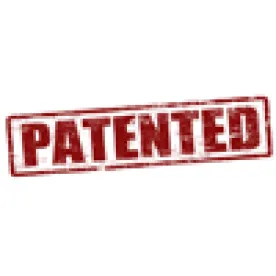In Williamson v. Citrix Online, LLC, No. 2013-1130, the Federal Circuit recently overruled earlier precedent and eliminated the “strong” presumption that a functional claim limitation lacking “means” language does not invoke 35 U.S.C. § 112, para. 6 (post-AIA § 112(f)). This is a significant change in the law that should be taken into account in patent prosecution and enforcement.
The New Standard
Previously, the standard set forth by the court in Lighting World1 was that “the presumption flowing from the absence of the term ‘means’ is a strong one that is not readily overcome.” Later, in Flo Healthcare Solutions, the court went slightly further, declining to apply “[the] provision without a showing that the limitation essentially is devoid of anything that can be construed as structure.”2 But the en banc court in Williamson abandoned both positions, and expressed concern with what it sees as “a proliferation of functional claiming untethered to [§ 112, ¶ 6] and free of the strictures set forth in the statute.”3
The standard now reverts to the one used pre-Lighting World4. The court states “[w]hen a claim term lacks the word ‘means,’ the presumption can be overcome and § 112, para. 6 will apply if the challenger demonstrates that the claim term fails to ‘recite sufficiently definite structure’ or else recites ‘function without reciting sufficient structure for performing that function.’”5 This is likely to result in § 112, ¶ 6 being found to apply more often, as there is no longer a strong presumption against its application absent the statutory “means” language. Additionally, the Williamson decision holds that “[u]nder 35 U.S.C. § 112, paras. 2 and 6…if a person of ordinary skill in the art would be unable to recognize the structure in the specification and associate it with the corresponding function in the claim, a means-plus-function clause is indefinite.”6 The close tying of § 112, ¶ 6 and indefiniteness suggests the need for solid structural or algorithm support in the specification if § 112, ¶ 6 may be found to apply.
Practical Considerations
Under the “strong presumption,” a claim recitation such as “a processor configured to [function]” instead of “a means for [functioning],” typically avoided the application of § 112, ¶ 6 at the Patent Office and in most courts, and would not require recitation of additional structure or an algorithm in the specification. But the new lowered Williamson standard may mean only that an examiner or patent challenger has the initial burden of establishing § 112, ¶ 6 applicability—leading to disputes regarding functional limitations in connection with common patent nonce words (e.g., module, mechanism, element, device). It remains to be seen how regularly this decision will be applied beyond software-type inventions to functional claims involving other more tangible technologies.
In what Judge Newman’s Williamson dissent refers to as a “litigator’s delight,”7 accused infringers in district court, the International Trade Commission, and the Patent Trial and Appeal Board facing functional claim limitations will almost certainly attempt show that prefatory claim terms and nonce words invoke “means-plus-function” scrutiny—and that the specification contains insufficient structural or algorithm support—rendering the limitations indefinite.
When drafting a specification, patent applicants will need to resolve the level of structural or algorithm support required for terminology they believe has recognized structure. Applicants should be careful to define elements potentially seen as nonce words with exemplary structural support, and should consider providing exemplary non-limiting algorithms when practical. Unchanged by Williamson is the best practice still using “means for” language if an applicant intends to invoke § 112, ¶ 6. Though the express invocation of § 112, ¶ 6 by patent applicants has been on the decline for decades, applicants may want to consider including such an invocation in at least one independent claim to urge the Patent Office and the courts to interpret other claim sets without such language differently.
1 Lighting World, Inc. v. Birchwood Lighting Inc., 382 F. 3d 1354, 1358 (Fed Circ. 2004) (emphasis added); see also Inventio AG v. ThyssenKrupp Elevator Americas Corp., 649 F.3d 1350, 1358 (Fed. Cir. 2011).
2 Flo Healthcare Solutions, LLC v. Kappos, 697 F. 3d 1367, 1374 (Fed Cir. 2012) (emphasis added), citing Masco Corp v. United States, 303 F. 3d 1316, 1327 (Fed. Cir. 2002).
3 Maj. Op., pp 15, 16.
4 Greenberg v. Ethicon EndoSurgery, Inc., 91 F 3d. 1580, 1583 (Fed. Circ. 1996)(“What is important is...that the therm, as the name for structure, has a reasonably well understood meaning in the art.”).
5 Maj. Op., p.. 16, citing Watts v. XL Sys., Inc., 232 F.3d 877, 800 (Fed. Cir. 2000).
6 Maj. Op., p. 21, internal citiations omitted, emphasis added.
7 Newman, Cir. J., dissent at 2.





 />i
/>i

